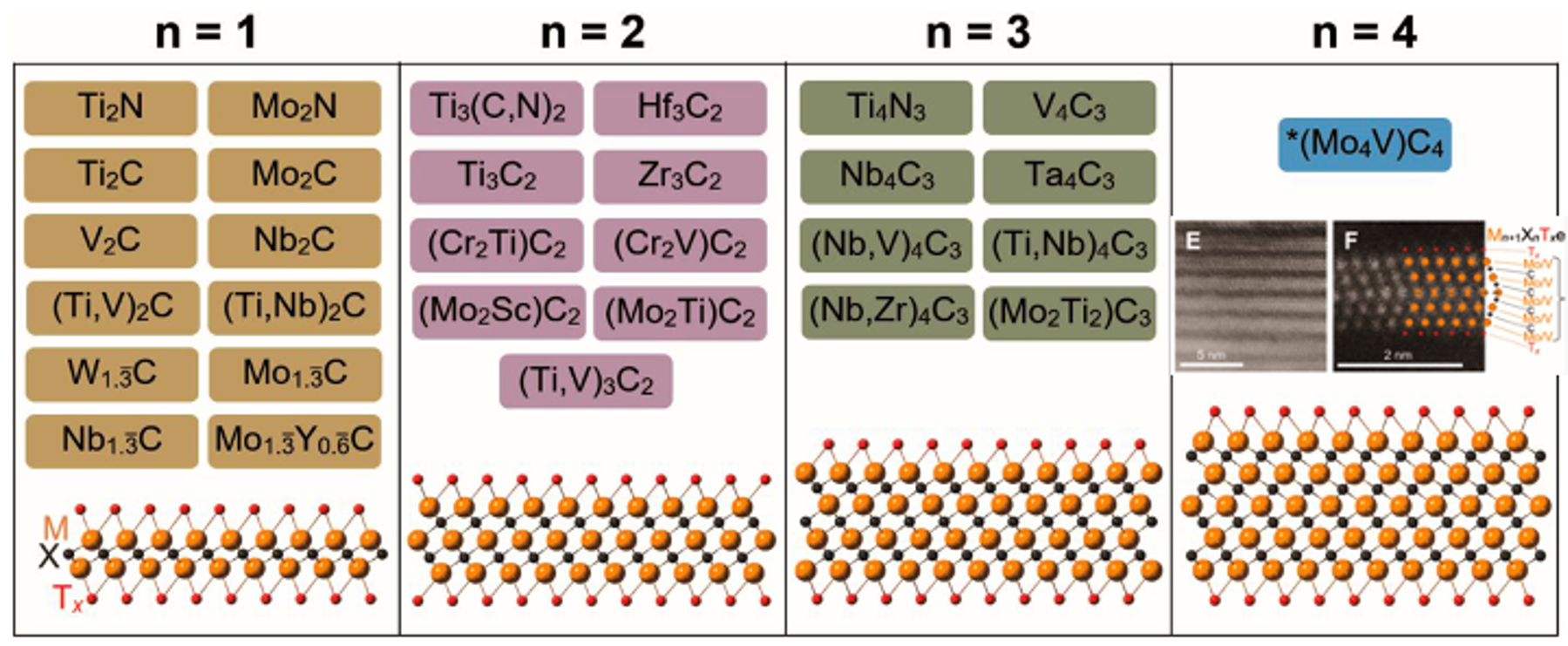(614g) Synthesis of Mo4VAlC4 MAX Phase and Two-Dimensional Mo4VC4 Mxene with Five Atomic Layers of Transition Metals
AIChE Annual Meeting
2020
2020 Virtual AIChE Annual Meeting
Materials Engineering and Sciences Division
Two-Dimensional Materials and Thin Films
Friday, November 20, 2020 - 9:30am to 9:45am
MXenes have a general formula of Mn+1Xn, typically described as n=1-3, where M is a transition metal (Ti, Nb, V, Mo, etc.) and are interleaved with layers of C and/or N (shown as X). Here, we report on the synthesis and characterization of the first MXene Mo4VC4), with 5 atomic layers (n=4), as well as its precursor, Mo4VAlC4. TEM and XRD showed the structure of this phase is P63/mmc similar to other MAX phases. However, this structure has a twinned set of M-layers, unique in the MAX/MXene family. Compositionally studied via EDS and XPS, the MXene composition was determined to be Mo4.10V0.90C2.99. HRSTEM, Raman spectroscopy, and DFT indicate that the crystal structure contains a solid solution of Mo and V. DFT calculations also indicate that other n=4 transition metal MAX phases (M'4M"AlC4) may be possible, suggesting that more M5C4Tx MXenes can potentially be synthesized. In addition, UV-vis-NIR spectroscopy, temperature-dependent resistivity measurements, and thermogravimetric analysis provide additional characterization on the optical, electronic, and thermal properties of this new Mo4VC4 MXene. This study provides a new subfamily of MXenes with five atomic layers of transition metals, allowing for wider range of compositions for more control over properties.


